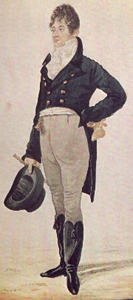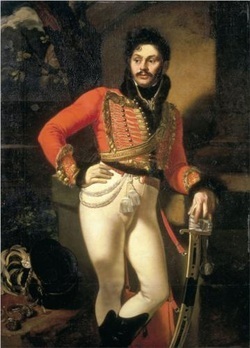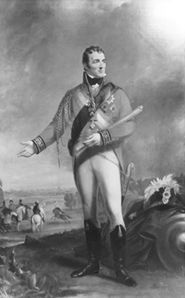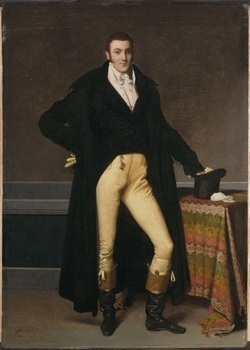A Regency gentleman and his boot
Her eyes drifted lower to the highly polished black Hussar boots which clung to his calf muscles. She took a deep breath and tried to turn her head away, but found herself unable.
Or was it unwilling?
Letter from a Rake.
 The military uniforms of European countries such as Prussia, France and Russia, had a great influence on English mens fashion in the 19th century. The boot was a practical solution to the poor condition of the roads and a gentleman’s need to ride.
The military uniforms of European countries such as Prussia, France and Russia, had a great influence on English mens fashion in the 19th century. The boot was a practical solution to the poor condition of the roads and a gentleman’s need to ride.
The Hessian boot (a favourite of Mr George Brummell)
The most popular type of boot was the Hessian. Originally, they were designed as a hard working leather boot for military officers. Having a low heel and a pointed toe, they were particularly suited to sit easily in the stirrup.
With a heart- shaped top and decorative tassel (gold for fashion and silver for mourning), they were a comfortable and practical form of footwear.
 The Hussar boot.
The Hussar boot.
The Hussar (or buskin) boot was a variation on the very popular Hessian boot. They were short calf- length Hessians, but without the decorative tassel.
Colonel E Davydov. Prussian Hussars 1809
 The Wellington boot.
The Wellington boot.
Another famous variation on the Hessian boot, which still survives in various forms today, was the Wellington boot. The Duke of Wellington had his boot maker, Hoby of St James’s Street London, change the boot so that the top reached to knee high in front. He also had the back lowered to make the boot more comfortable. The story being, that Wellington had noted the number of injuries sustained by his mounted soldiers from having been shot in the knee.
The higher front on the Wellington (without a turnover cuff) afforded at least a modicum of cover. The Wellington was cut to a loose fit and soon gained in popularity.
 The Top Boot.
The Top Boot.
The top boot (or hunt boot) had a cuff at the
top. The inside of the boot was made of lighter color leather and was often turned down to give a stylish two tone effect. Some boots were made with a separate tan top to give the impression of a ‘turned down’ boot.
Portrait of Joseph Antoine de Nogent
Copyright. www.harvardartmuseums.org
Or was it unwilling?
Letter from a Rake.
 The military uniforms of European countries such as Prussia, France and Russia, had a great influence on English mens fashion in the 19th century. The boot was a practical solution to the poor condition of the roads and a gentleman’s need to ride.
The military uniforms of European countries such as Prussia, France and Russia, had a great influence on English mens fashion in the 19th century. The boot was a practical solution to the poor condition of the roads and a gentleman’s need to ride.The Hessian boot (a favourite of Mr George Brummell)
The most popular type of boot was the Hessian. Originally, they were designed as a hard working leather boot for military officers. Having a low heel and a pointed toe, they were particularly suited to sit easily in the stirrup.
With a heart- shaped top and decorative tassel (gold for fashion and silver for mourning), they were a comfortable and practical form of footwear.
 The Hussar boot.
The Hussar boot.The Hussar (or buskin) boot was a variation on the very popular Hessian boot. They were short calf- length Hessians, but without the decorative tassel.
Colonel E Davydov. Prussian Hussars 1809
 The Wellington boot.
The Wellington boot.Another famous variation on the Hessian boot, which still survives in various forms today, was the Wellington boot. The Duke of Wellington had his boot maker, Hoby of St James’s Street London, change the boot so that the top reached to knee high in front. He also had the back lowered to make the boot more comfortable. The story being, that Wellington had noted the number of injuries sustained by his mounted soldiers from having been shot in the knee.
The higher front on the Wellington (without a turnover cuff) afforded at least a modicum of cover. The Wellington was cut to a loose fit and soon gained in popularity.
 The Top Boot.
The Top Boot.The top boot (or hunt boot) had a cuff at the
top. The inside of the boot was made of lighter color leather and was often turned down to give a stylish two tone effect. Some boots were made with a separate tan top to give the impression of a ‘turned down’ boot.
Portrait of Joseph Antoine de Nogent
Copyright. www.harvardartmuseums.org
Published on May 25, 2013 20:33
No comments have been added yet.



